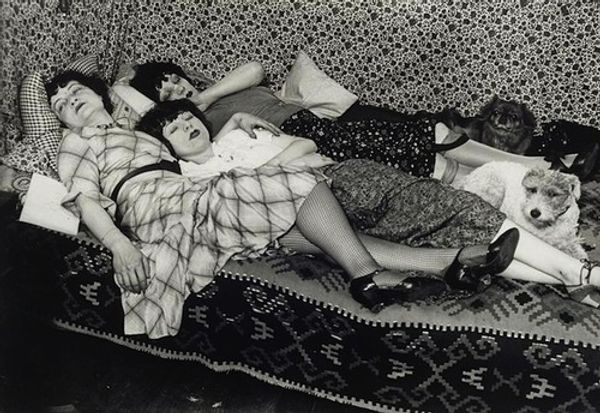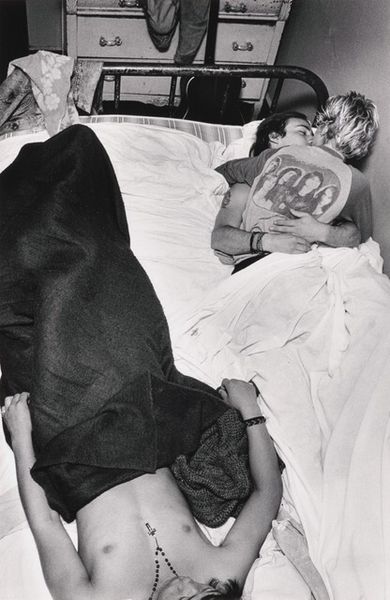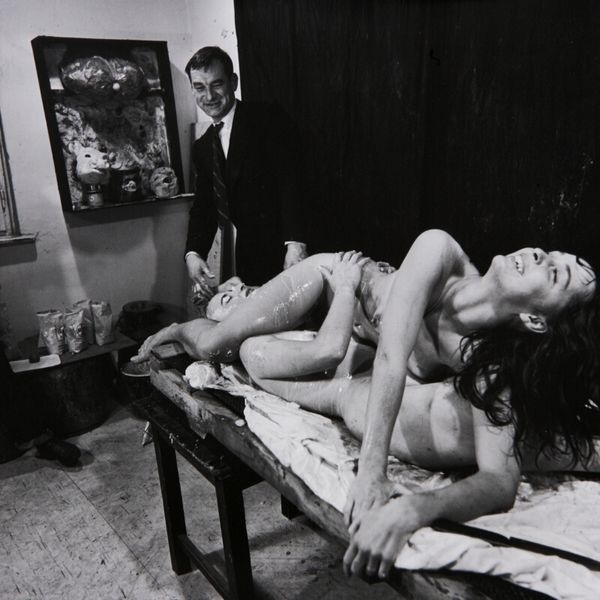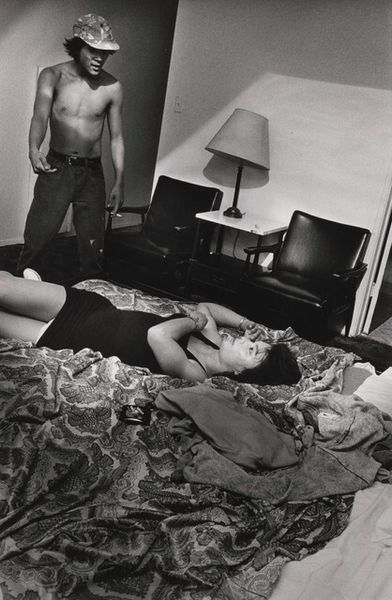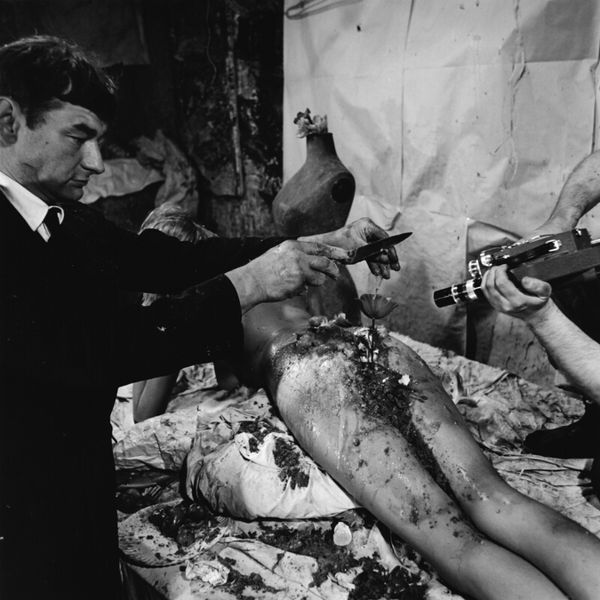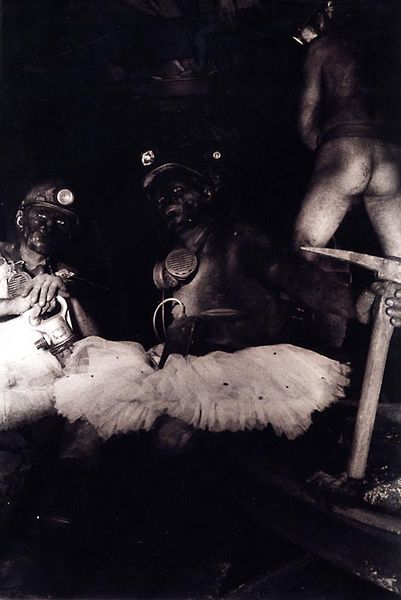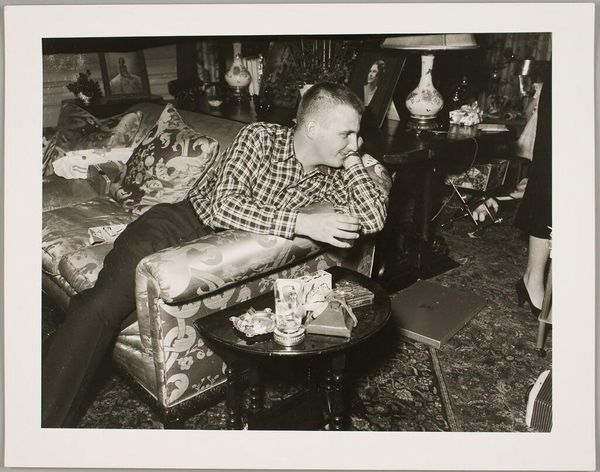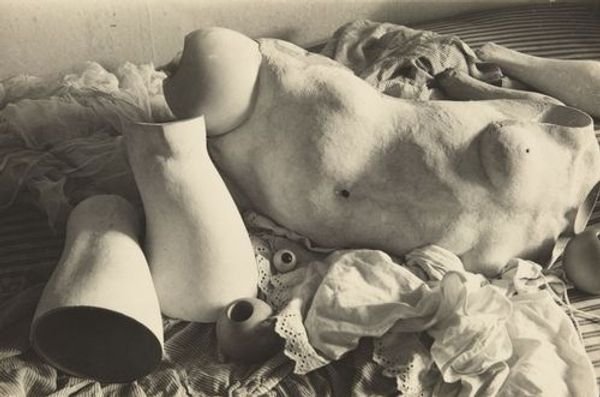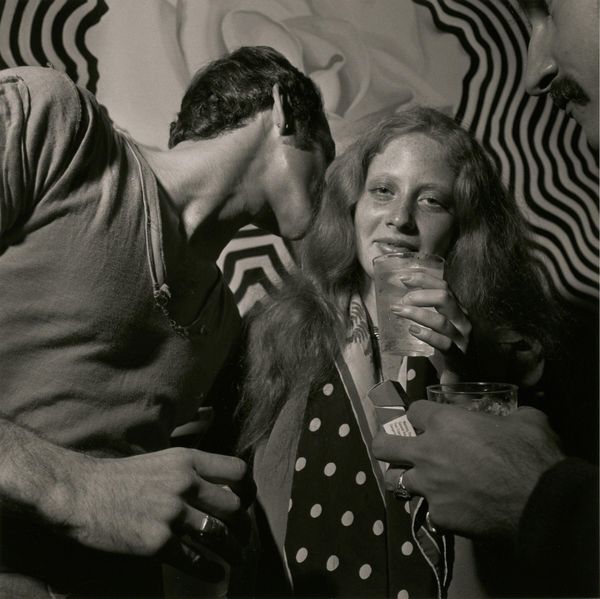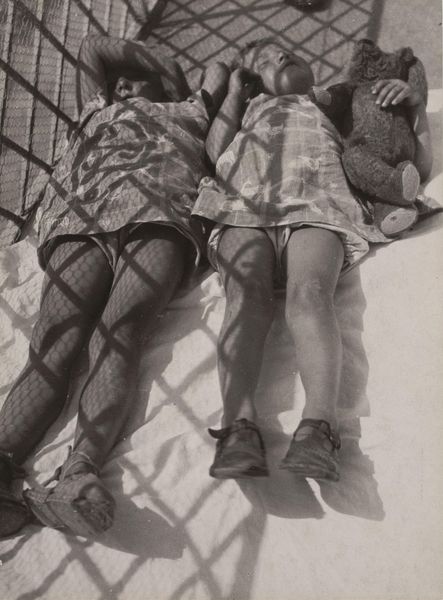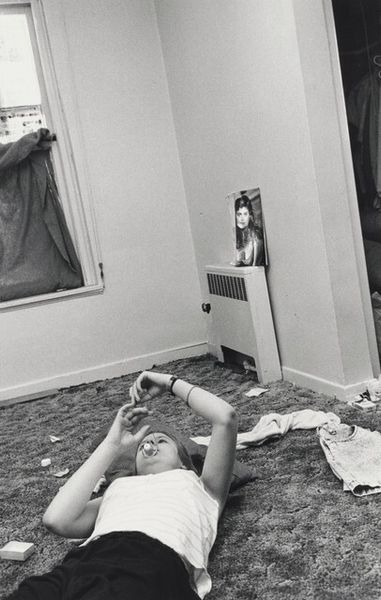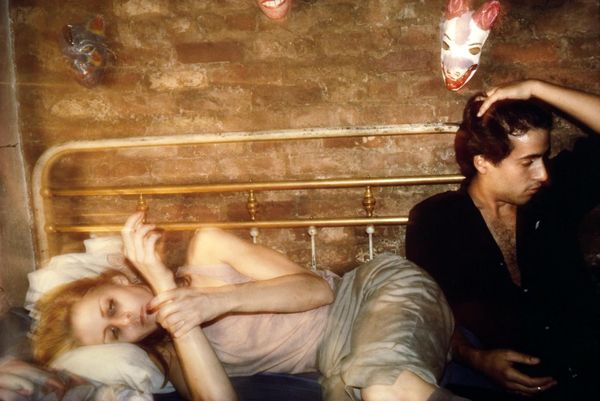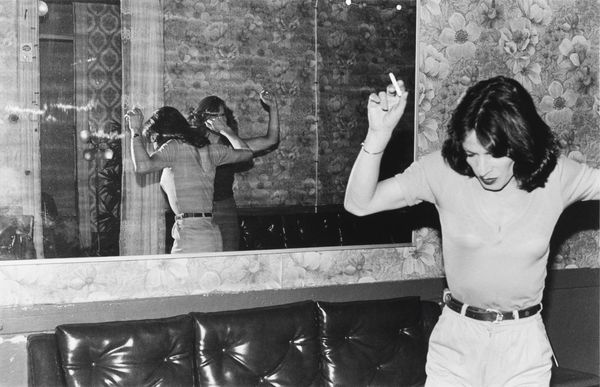
photography, gelatin-silver-print
#
portrait
#
black and white photography
#
photography
#
black and white
#
gelatin-silver-print
#
monochrome photography
#
genre-painting
#
monochrome
#
realism
#
monochrome
Dimensions: sheet: 27.6 × 35.4 cm (10 7/8 × 13 15/16 in.) image: 25.1 × 32.5 cm (9 7/8 × 12 13/16 in.)
Copyright: National Gallery of Art: CC0 1.0
Curator: Jim Goldberg's gelatin-silver print, possibly from between 1990 and 1994, is titled "Baby Angel, Funland Squat." It's a stark portrait of a family, seemingly in a state of repose, or perhaps, just captured in a quiet moment. Editor: My immediate reaction is one of tension. The monochrome palette, high contrast and tight framing contribute to a feeling of claustrophobia, reflecting what seems to be a difficult environment. Curator: Indeed. Goldberg’s work often delves into the lives of marginalized communities, offering a raw, unflinching look at societal realities. This image, likely part of a larger series, reflects on the challenges faced by young families living on the fringes. Note how the squalor is hard to ignore, underscoring this theme of social marginalization. Editor: From a formal perspective, the composition is intriguing. The baby acts as a central anchor, the soft, diffused light on the child's face contrasted against the sharper, more defined details of the adults. Also consider the textural differences—the smooth skin of the infant versus the heavily tattooed arms. Curator: Exactly. Goldberg uses the tradition of documentary photography, to raise questions about the subjects' socio-economic positions in American culture, highlighting the family’s precarity. The title is deeply ironic when we note how it invokes ideas of innocence set against a very harsh social backdrop. Editor: I see how the title invites an engagement with complex symbolism. Also consider the geometric forms—the linear edges of the table contrast with the curved forms of the bodies, suggesting a struggle to contain the human element within a structured, perhaps restrictive, space. The tattoos create a landscape on skin, each element suggesting a deeply meaningful narrative. Curator: Absolutely. The politics of representation here are quite profound, compelling us to consider issues of agency, vulnerability, and the complex narratives embedded within marginalized communities. The picture almost challenges viewers to empathize and question societal norms that create such circumstances. Editor: On closer viewing, the composition creates an atmosphere both intimate and alienating, successfully evoking empathy but leaving me uneasy. There are formal, textural and thematic dualities and juxtapositions that stay with you. Curator: It serves as a potent reminder of the power of visual storytelling to prompt social awareness and challenge our own assumptions.
Comments
No comments
Be the first to comment and join the conversation on the ultimate creative platform.
